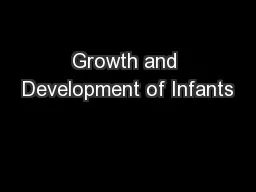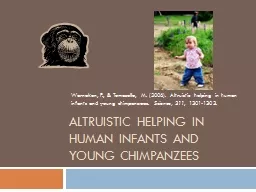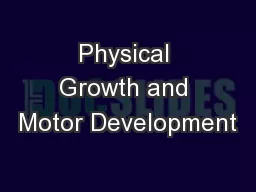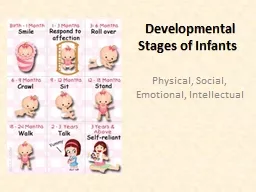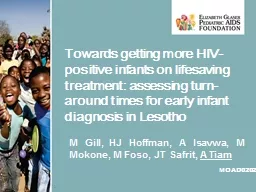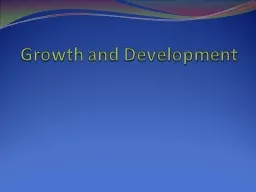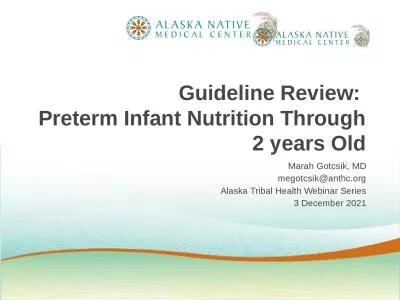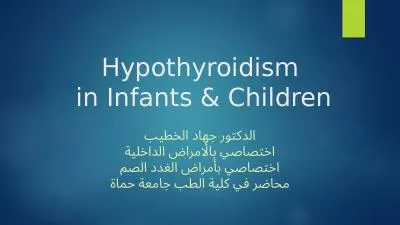PPT-Growth and Development of Infants
Author : lindy-dunigan | Published Date : 2016-08-11
Growth changes in size such as weight and length Developmen tincreases and changes in physical emotional social or intellectual skills They are not the same thing
Presentation Embed Code
Download Presentation
Download Presentation The PPT/PDF document "Growth and Development of Infants" is the property of its rightful owner. Permission is granted to download and print the materials on this website for personal, non-commercial use only, and to display it on your personal computer provided you do not modify the materials and that you retain all copyright notices contained in the materials. By downloading content from our website, you accept the terms of this agreement.
Growth and Development of Infants: Transcript
Download Rules Of Document
"Growth and Development of Infants"The content belongs to its owner. You may download and print it for personal use, without modification, and keep all copyright notices. By downloading, you agree to these terms.
Related Documents

